Category: Welding
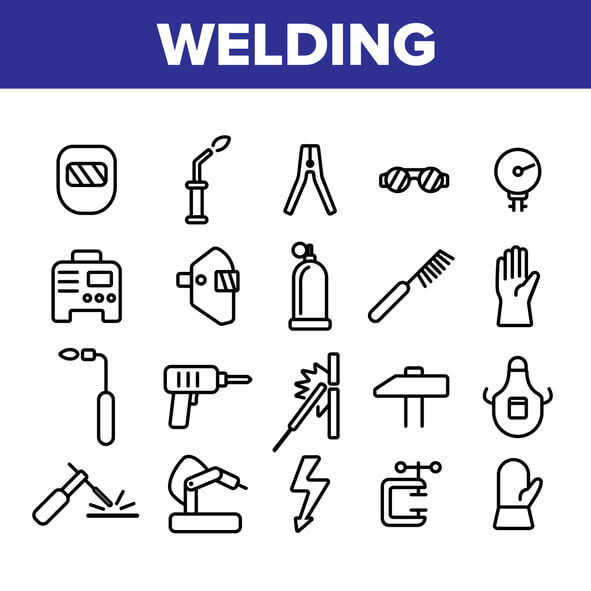
Precision and clarity of communication are central to the success of any welding process. Welding symbols are handy pointers that ensure seamless communication between designers, engineers, and welders on any project.
Welding symbols are graphic representations that convey essential information about the type and quality of welds required in a blueprint. They guide welders through the complexities of a project and ensure that the final product meets the specified standards. After completing welder training, understanding and interpreting these symbols is not just a skill but a key to unlocking a welder’s true potential. Here’s why these symbols are indispensable after completing welder training.
The Structure of a Basic Welding Symbol
The welding symbol has three key elements: arrow, reference line, and tail. The arrow, pointing to the weld location on the workpiece, gives clear direction for execution. The reference line, acting as a baseline for the arrow, serves as a foundation, aiding in positioning other symbols. The tail extends from the reference line, conveying vital details about the welding process, such as weld type and specifications. Together, these elements provide essential information for accurate and successful weld execution.
Clarity in Communication and Precision in Execution
Imagine a scenario where a welder receives a set of blueprints without any welding symbols. It would be like navigating through uncharted territory without a map. Welding symbols provide a standardized method of communication, eliminating ambiguity and ensuring that every member of the welding team is on the same page. This clarity is vital for efficiency, as it reduces the likelihood of errors and rework, ultimately saving time and resources.
Welder training equips individuals with the technical skills required for various welding techniques. However, welding symbols often outline the specifics of a welding project. These symbols guide welders in selecting the right welding processes, filler materials, and other parameters crucial to the precision execution of the weld. This precision contributes to the final product’s structural integrity and enhances the welder’s reputation for delivering quality work.

Welder Training Emphasizes Compliance With Industry Standards
As our welder courses emphasize, adhering to established standards in the welding industry is non-negotiable. Welding symbols bridge the design phase and fabrication, ensuring the welds meet industry codes and standards. Welder training teaches the fundamentals, but welding symbols provide the specific details needed to comply with regulations and certifications. This adherence is vital for welders working in aerospace, automotive, and construction sectors, where precision and safety are paramount.
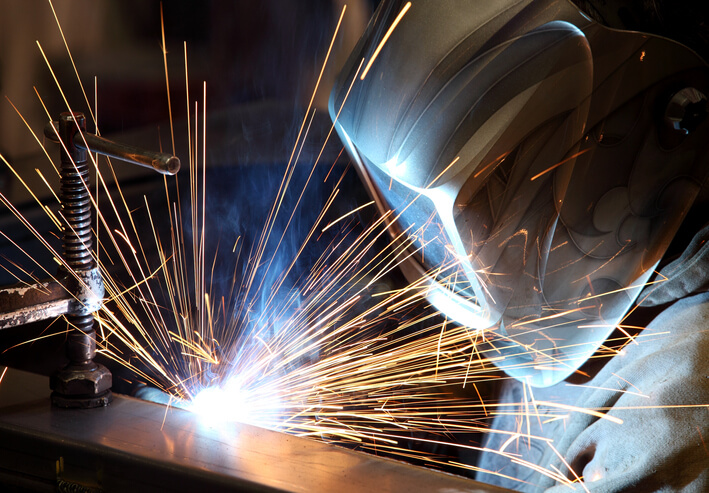
Efficient Problem-solving and Professional Growth Opportunities
During a welding project, challenges and unexpected issues can arise. Welding symbols empower welders to make informed decisions and solve problems efficiently. Whether it’s adjusting welding parameters, choosing appropriate techniques, or understanding the criticality of a particular weld, the ability to decipher welding symbols enables welders to navigate complexities confidently and competently.
After completing welder training, continual professional development is essential. Proficiency in interpreting welding symbols opens doors to advanced certifications and specialized roles within the welding industry. Welders who can seamlessly translate the language of welding symbols demonstrate a commitment to excellence and stand out in a competitive field, paving the way for career advancement and diverse opportunities.
Are you looking for a world-class welder college?
Contact NATS for more information.
Considering Welder Training? 3 Reasons Why Your Skills Are In Such High Demand
October 06, 2023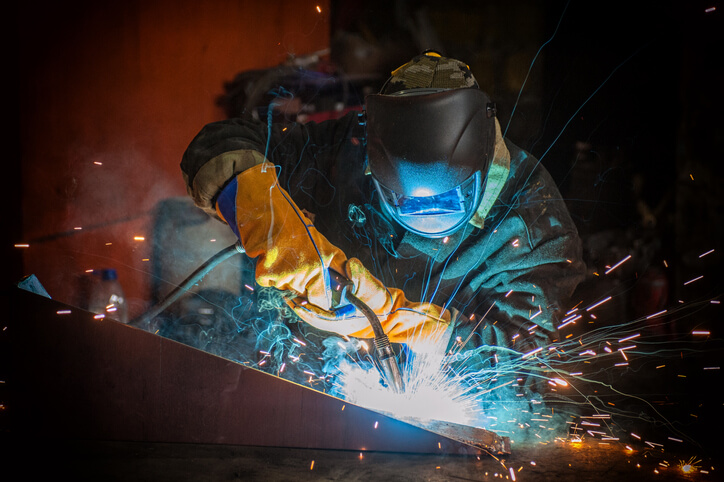
Job security is an essential factor for career seekers interested in the trades. Indeed, before enrolling in career training, you want to know that your skills will be in high demand upon graduation. Welding is an appealing career path for several reasons. It’s a skill that can open doors for you in various industries, including construction, manufacturing, aerospace, and automotive. As many welders retire, job seekers hold on to misconceptions about the role, industry growth continues, and opportunities abound. Keep reading to learn why the skills you’ll learn in our Structural and Pressure Vessel Welder Diploma will make you a sought-after candidate.
1. An Aging Welder Population Has Made Room for New Workers
Like many industries, many retirements among welders have caused a labour gap. According to 2022 data, the average age for welders is 55, meaning that many workers in the industry are preparing for retirement. This is an advantage to you if you’re considering this career path as many positions open up, but returning older welders is not the only contributing factor. When searching for the right career, projected industry growth is also essential.

2. The Rapid Growth of Canada’s Manufacturing Industry
Welder training at North American Trade Schools has an interdisciplinary scope, meaning your skills will help you find work in several industries. One field in particular offers candidates many appealing opportunities.
In Canada, the manufacturing industry has been growing steadily due to the rapid globalization of markets, fewer trade barriers, and high demand. To aid industrial production, welders in the manufacturing industry must join metal pieces together to create a wide array of products, make repairs, and reinforce structures.
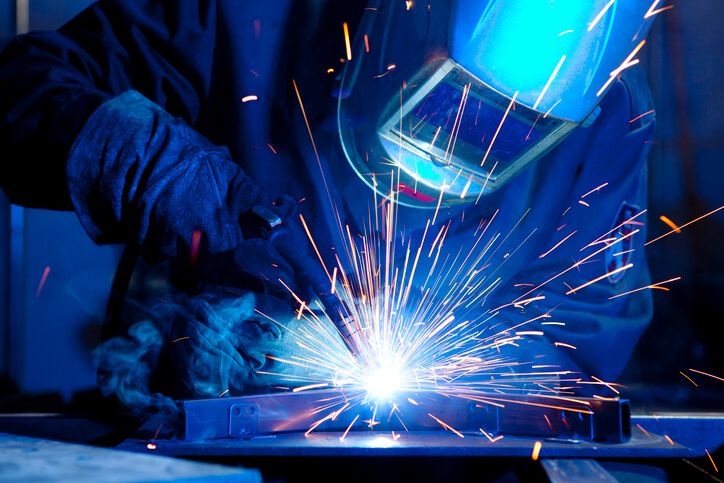
3. Welder Training Opens You Up to Growth and Advancement
You may be wondering, why aren’t new trades workers rushing to fill welding positions? Misconceptions about the industry keep positions available. Some career seekers falsely label welding as a ‘dead-end’ field, but on the contrary, there is plenty of opportunity for continued growth and advancement. Some also believe the work of welders to be monotonous. Still, in reality, welder college leads to opportunities for work in several fields and a wide array of exciting tasks that significantly contribute to Canada’s infrastructure.
Are you ready to start welder courses?
Contact NATS to learn more!
A Day In The Life Of A Construction Millwright Apprentice After Welder College
August 29, 2023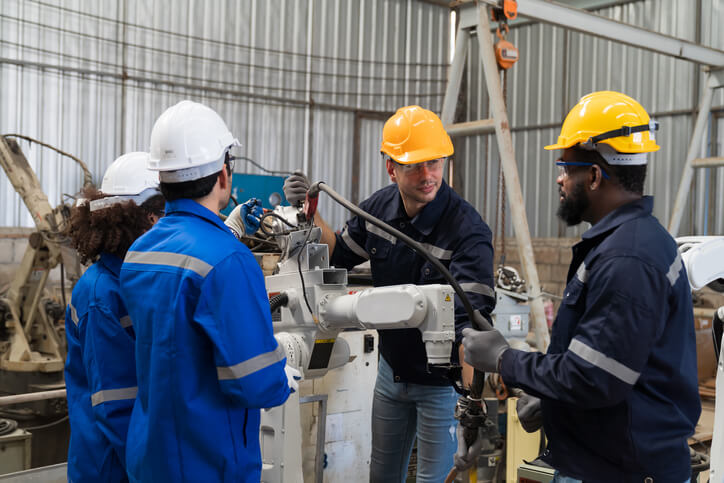
An apprentice millwright is a craftsman trained in high-precision work, specializing in the installation, repair, upkeep, and assembly of machinery in power plants, construction zones, and manufacturing facilities. Daily, these apprentices engage in preventative care for forklifts. They support electricians and experienced millwrights, gaining insights and skills from them. Their responsibilities include conducting routine maintenance on Durco pumps, motors, and cranes, and operating heavy machinery as required.
An apprenticeship is typically a paid position where the individual learns the trade directly on the job, while a pre-apprenticeship prepares individuals with the foundational skills they’ll need once they secure an apprenticeship, acting as a stepping stone. At NATS, our training focuses on imparting those foundational, transferable skills, setting students up for success in either avenue.
Setting out on a professional path after graduating from welder college can be both thrilling and life-changing. If you’re eager to sharpen your skill set and step into the realm of machinery setup and care, the role of a construction millwright apprentice could be the perfect fit for you. In this piece, we’ll delve into a day in the life of a construction millwright apprentice, highlighting their daily duties, growth avenues, and the priceless competencies they gather in their journey post-welder college.
Setting the Stage
A construction millwright apprentice typically starts their day bright and early, usually as the first rays of dawn appear. Before diving into the day’s work, they take a moment to go over the tasks they need to accomplish, mentally preparing for the challenges ahead. Their education at welder college provides a solid foundation, ensuring they are well-equipped for what’s to come. As the day gains momentum, they often begin with crucial first tasks like measuring, cutting, and fitting hangers.
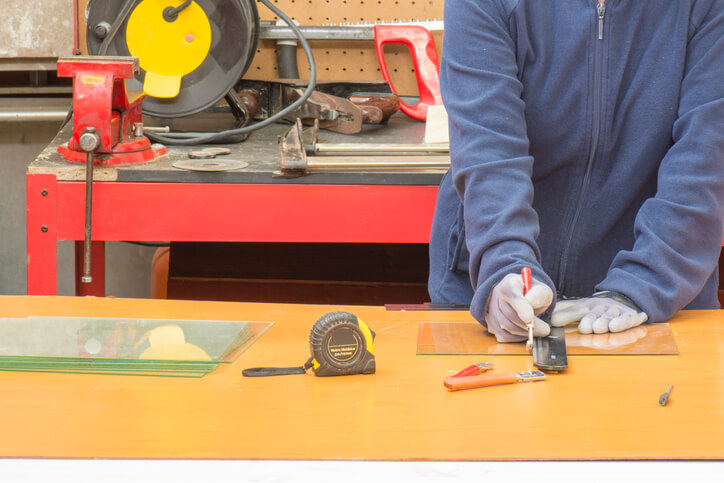
To do this, they rely on hand tools and ladders, applying their skills meticulously. This initial activity not only dictates the flow of the rest of the day but also demands a high level of accuracy and focus—traits they’ve honed to perfection during their welder training.
Mastering the Art of Welding and Equipment Alignment
The midday period offers a stage for the millwright apprentice to display an array of mastered skills, under the watchful eyes of an experienced Construction Millwright. Drawing on the in-depth knowledge attained in welder courses, the apprentice becomes a maestro of metalwork. With proficiency in arc welding, MIG welding, TIG welding, and the delicate art of oxyacetylene cutting, they tackle intricate welding repairs and installations. From restoring the vitality of worn-out pumps, motors, and gearboxes to adeptly aligning hefty machinery with a selection of specialized tools. The apprentice effortlessly merges welding artistry with the multifaceted responsibilities of a millwright. This synergy of skills not only showcases their versatility but also underscores the comprehensive training that shapes their daily operations.

Collaborative Work and Problem-Solving
After a satisfying lunch break, the apprentice gets back to work, joining forces with experienced millwrights and electricians. This teamwork creates a friendly and cooperative environment, where everyone works together. The afternoon is a chance to do different tasks: assisting in making heating and cooling systems better, fixing things very carefully, and even working on big building projects. Some jobs include putting up strong railings, setting up ladders, and making sure pipes and powerful fans are held securely. Every job, whether it seems simple or hard, is a great chance for the apprentice to learn. It’s a time to put what they learned in welder college and millwright training to good and practical use. It’s a mix of classroom learning and real-world practice.
Our Structural and Pressure Vessel Welder Diploma program at NATS is a stepping stone, offering the foundational and transferable skills you need to potentially obtain an apprenticeship or pre-apprenticeship. While we don’t directly offer these positions, our training equips you with the fundamental knowledge and confidence to pursue them while securing potential future employment in the industry.
Are you interested in welder training?
Contact NATS for more information.

When people think about welding, they often picture sparks flying and skilled technicians working with their hands. While manual dexterity and practical skills are undoubtedly crucial in welding, you might be surprised to learn that math plays a vital role in this profession as well.
Mathematics provides the foundation for understanding welding processes, measurements, and calculations, making it an essential skill for those completing welder training. Welders, particularly professional ones, need to possess a strong understanding of various mathematical concepts, including fractions, decimals, geometry, volume, and area. This knowledge is crucial because welding demands exceptional precision to ensure the structural integrity of the resulting welds, especially in applications involving high-pressure vessels.
In this blog post, we will explore the significance of math in welding and why it is essential for aspiring welders to develop a strong mathematical aptitude.
Accurate Measurements and Calculations and Material and Alloy Comprehension
Welding requires precision and accuracy in measurements. From determining the length and angle of a joint to calculating the appropriate welding parameters, accurate measurements are critical to ensuring structural integrity and weld quality. Math skills enable welders to interpret blueprints, understand dimensions, and make precise calculations. Whether it’s determining the required material quantities, calculating heat inputs, or evaluating welding tolerances, math helps welders execute their work with precision and efficiency.
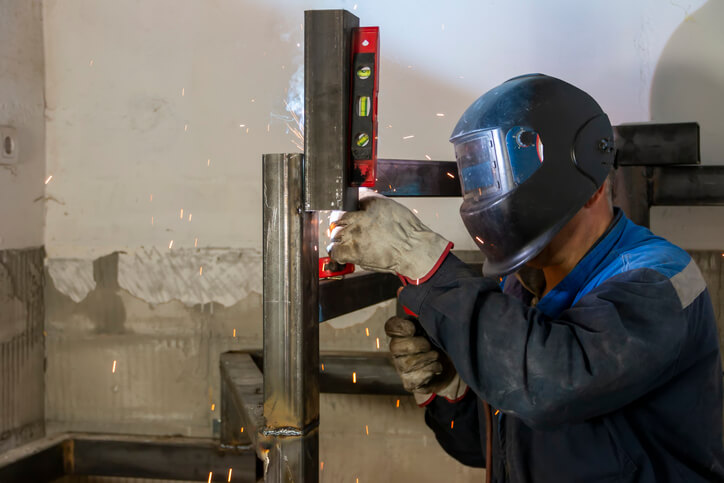
Understanding the properties of different materials and alloys is paramount to welding. Math provides the necessary foundation for comprehending these properties and their behaviour under various welding conditions. Equations related to material strength, thermal expansion, and mechanical properties assist welders in selecting the right welding technique and parameters for a given application. This knowledge helps prevent material distortion, cracking, and other welding defects that can compromise the quality of the weld.
Blueprint Interpretation Made Easy
Blueprints are a universal language in the welding profession. They provide welders with essential information regarding joint design, weld symbols, and dimensions. Proficiency in math allows welders to interpret blueprints accurately, identify critical dimensions, and plan their welding processes accordingly. Understanding geometric shapes and angles is particularly important when working with complex joint configurations. Welders with mathematical proficiency can accurately analyze the blueprint’s information, apply mathematical principles such as trigonometry, and determine the exact angles and dimensions needed for the welds. This attention to detail and mathematical precision ensures that the welds fit precisely, maintaining the desired structural integrity.
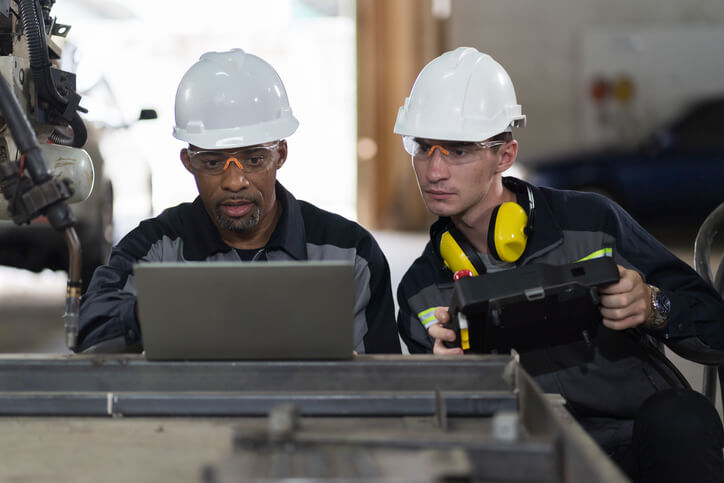
Problem Solving and Troubleshooting Made Easy After Welder Training
Welding often presents challenges that require problem-solving skills. Math, in addition to their welder training, equips welders with the ability to analyze complex situations, apply logical reasoning, and devise effective solutions. For instance, when encountering irregular joint configurations, welders can use math to determine the correct angles and dimensions for their welds. In addition, math proficiency allows welders to troubleshoot welding defects by identifying potential causes and making adjustments to welding parameters.
Mathematics provides a systematic framework for welders to approach challenges, encouraging a methodical and analytical mindset. It enhances their ability to understand the underlying principles of welding processes, enabling them to make informed decisions and take corrective actions when necessary.
Prepare for a Successful Welding Career Through Welder Training With NATS!
The Structural and Pressure Vessel Welder Diploma Program at North American Trade Schools (NATS) is a comprehensive program that provides students with the essential knowledge and practical skills needed to excel in the field of welding. Through hands-on training, students learn various welding techniques, safety protocols, blueprint reading, and welding symbols. The program’s curriculum is designed to meet industry standards and prepare graduates for entry-level welding positions. With experienced instructors, state-of-the-art facilities, and a focus on real-world applications, the welder diploma program at NATS equips students with the expertise and confidence to pursue rewarding careers in welding, contributing to their professional growth and success.
Are you looking for a world-class welder college?
Contact NATS for more information.

Welding is undoubtedly worth exploring if you’re looking for an interesting career path that allows you to use your hands and create tangible results. Welders use metal to build various structures, from intricate decorative pieces to reinforcements for our bridges and large buildings. Several industry-specific competencies and soft skills are required for success as a welder. As with any career path, quality training is an excellent place to start.
North American Trade Schools offers a comprehensive Structural & Pressure Vessel Welder Diploma Program to equip you with all of the skills you’ll need to be employed in the welding field with confidence. Math for welding, health and safety concerns, and welding theory are just a few topics covered at length in our program. In addition, students can practice their welding skills in practical labs. Keep reading to discover what skills you can expect to learn in our training program and how they’ll help you succeed.
1. Physical and Administrative Capabilities Are Required
Welding is a physical job that requires a fair amount of strength and endurance. Everyday welding tasks include lifting, twisting, and bending to assemble and dismantle heavy-duty equipment. Welders also benefit from a steady grip as they must hold a torch steady for extended periods. After welder training, your eyes will be as important as your hands. Excellent depth perception, hand-eye coordination, and close vision will help you create consistently accurate results.
While having a physique is beneficial, administrative skills are equally as important.
Welding is a project-based career path. To succeed, you should possess excellent project management skills. This involves effective time management to meet deadlines, good project planning, organization, thorough documentation practices, and teamwork.
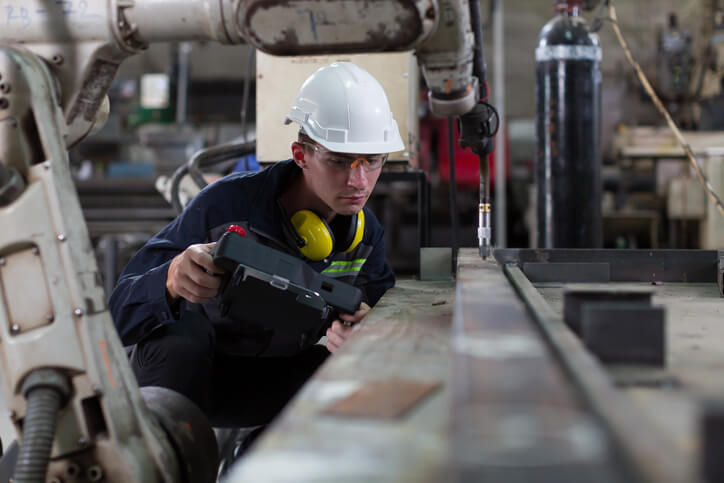
Though much of your work as a welder will be done independently, effective communication skills are essential to your productivity since you must collaborate with other team members, supervisors, and others working on your job site or factory.
2. Attention to Detail and Numerical Skills Help in Welder Training
Welders are required to produce results with minimal flaws. If you’re naturally detail-oriented, you’ll be well prepared to notice and fix grease buildup, corrosion, bubbling, and cracks on your work. As a welder, parts, material, and equipment inspection will be a regular part of your role, which requires taking note of issues quickly.
Your attention to detail will also help you maintain a safe work environment since you will often work in dangerous surroundings after welding college. In addition, flaws in your work could have public safety implications, so it’s important to make double and triple-checking a habit. Like other welding skills, you will have plenty of opportunities to refine your attention to detail during training as you learn what imperfections to look for in materials, equipment, and your projects.
Though you won’t need to understand advanced algebra to succeed as a welder, numerical skills are handy. Our Structural & Pressure Vessel Welder diploma program covers basic math for welders, which will help you calculate dimensions, interpret sketches, read blueprints accurately, and understand two- and three-dimensional diagrams. Good math skills will help you with your day-to-day welding tasks, logical reasoning, and problem-solving on the job.
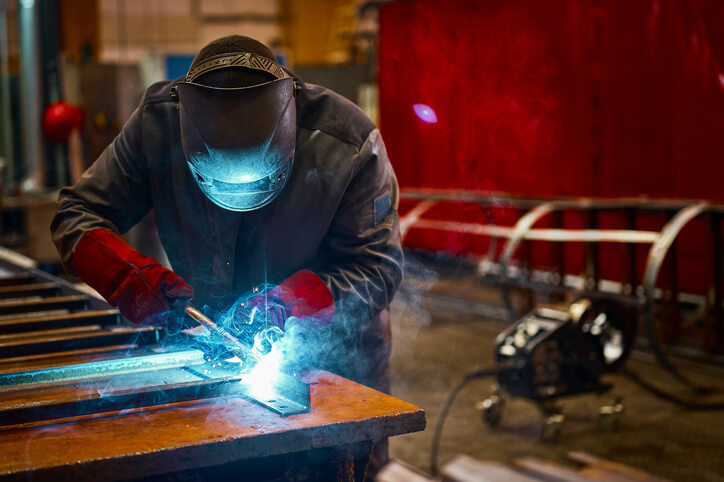
3. Mechanical Skills Will Help You Use Tools Properly
Welders work on various projects and must understand the technology and tools that will make their work more accessible and more effective. In our program, you will have the opportunity to practice using welding equipment in a state-of-the-industry lab environment under the supervision of our expert instructors.
Students learn how to use modern tools for welding, commonly used techniques like gas metal arc welding, gas tungsten arc welding, flux cored arc welding, and shielded arc metal welding. If you’re mechanically inclined and enjoy learning about new technologies, this part of your welding training will undoubtedly be fulfilling.
If you have what it takes to become a successful welder, start training today! The Structural & Pressure Vessel Welder diploma program will help you transform your natural aptitudes into highly marketable skills in an exciting industry!
Are you ready to earn your welding diploma?
Contact NATS to learn how you can get started.
A Day in the Life of an Apprentice Boilermaker After a Welder Diploma Program
February 10, 2023
Boilers are large pressure vessels that create steam for energy. This energy is used to create paper, process foods, and generate electricity. Specialized welding skills are needed for the construction, installation, maintenance, and repair of boilers, and if you’re considering welding training, a boilermaker role could be a good option. After completing a reputable welding program, you’ll need to finish an apprenticeship program, where you’ll hone your skills and make the professional connections needed to launch your career as a journeyman boilermaker.
Typically, Canadian apprenticeship programs last a total of 3 years. They usually occur in 12-month stretches between in-cass instruction periods. Students value apprenticeships because they offer them the perfect opportunity to gain hands-on experience and earn money simultaneously. Read on to learn what it might be like to complete a boilermaker apprenticeship.
Start With Safety Measures After a Welder Diploma Program
As with all occupations in the trades, boilermakers must prioritize their safety. The beginning of your day as an apprentice boilermaker is the perfect time to ensure that you’re wearing the proper personal protective equipment and that your environment is safe. Your role can expose you to several hazards, such as flying objects, dust, splashed acid, sharp objects, the sun, and heavy machinery, which can harm your eyes, head, feet, respiratory system, and skin. After completing your welder diploma program, ensure that you wear eye protection, grade 1 protective footwear, sun protection, air-purifying respirators, and high-visibility clothing. Additionally, make sure that you’re provided with a safety harness when you’re working at heights.
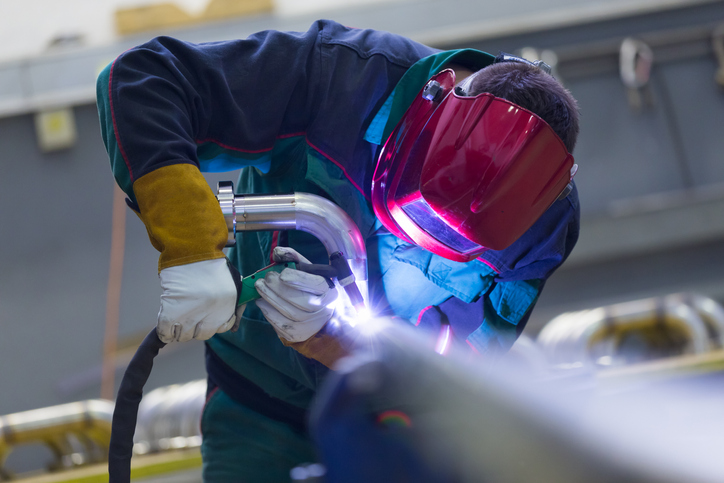
Aid the Construction and Installation of Boilers
One of your principal learning objectives as a boilermaker apprentice is the construction and installation of boilers. These duties require several skills that you’ll have plenty of opportunities to practice throughout your apprenticeship. Some of these skills include blueprint reading, cutting metal, fitting and welding metal together, and directing crane operators during installation and repair. After welding technician courses, you will often begin by shadowing and assisting. With time and experience you’ll be able to complete these basic boilermaker duties all on your own. In addition to construction and installation, maintenance will be another important aspect of your work as a boilermaker apprentice.
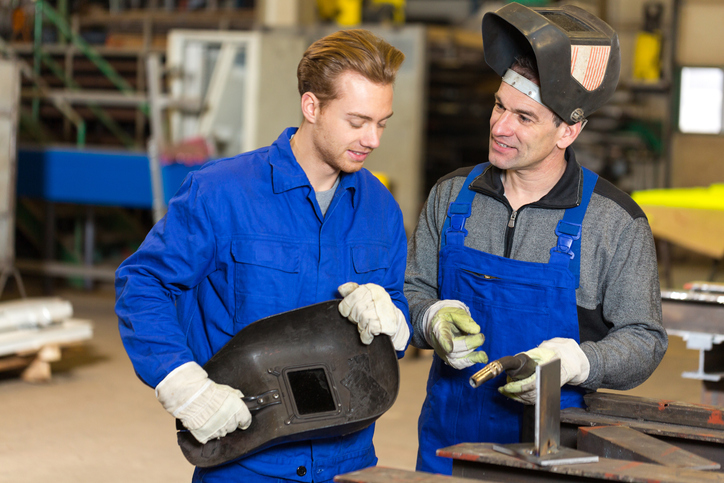
Apprentices Keep Boilers Clean as a Maintenance Practice
Boiler cleaning improves the performance of the machine. By removing limescale and soot buildup, you’re preventing heat loss, which reduces downtime for the boiler and extends its lifespan. This is a cost-effective practice that makes your role valuable to companies that save significant sums of money with your services. As a boilermaker apprentice, you will learn to conduct regular visual inspections, test the effectiveness of a boiler to determine whether it needs maintenance or replacement, and clean boilers. You will likely use cleaning solvents, scrapers, and wire brushes to complete this task.
Learn the fundamentals of welding in our state-of-the-industry facility and start your successful boilermaker career with us.
Are you ready to begin welding courses?
Contact NATS to learn how you can get started.
4 Reasons to Consider a Career as a Construction Millwright After Welding College
October 18, 2022
Construction millwrights are responsible for installing, maintaining, troubleshooting, and repairing industrial and mechanical equipment. If you enjoy working with machines, are good with your hands, and like to practice your problem-solving skills, this could be the perfect career path for you. Some core responsibilities include reading schematic drawings, blueprints, and diagrams in order to guide your work. In addition, construction millwrights inspect equipment in order to identify malfunctions to be fixed.
On your path to becoming a construction millwright, you’ll have the opportunity to develop many specialized skills that will help you become a sought-after professional in a thriving industry. Are you still wondering if this path is right for you? Here are four great reasons to pursue a career as a construction millwright.
1. The Chance to Work in a Variety of Settings
As a construction millwright, some of your most common employment opportunities will be in the manufacturing, construction, industrial, mining, and electrical industries. This presents you with a range of options when it comes to work environments to explore. Don’t know what sector to start with? No problem! There are so many areas to choose from–if you try one and dislike it, you can simply try another. After completing welding classes and your apprenticeship, you could choose to work in a warehouse, in a construction firm, or in a manufacturing plant.
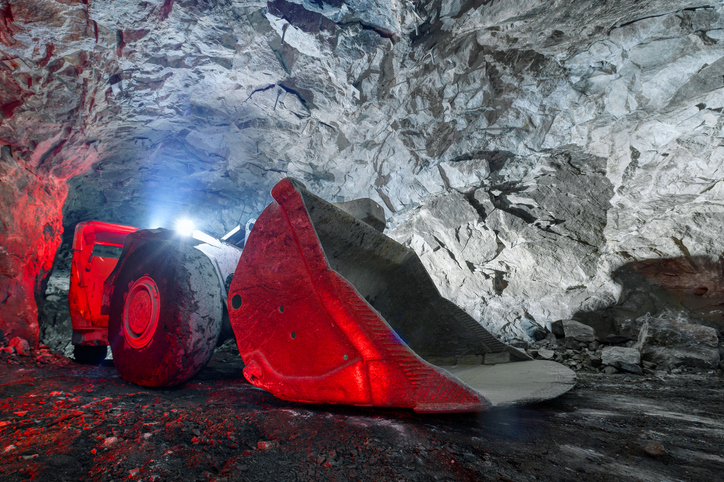
2. Plenty of Full-Time Positions Available Due to a Labour Gap
Several industry trends have contributed to a labour demand for construction millwrights in Canada, which you should definitely take advantage of. Because of recent economic growth in Canadian manufacturing, there’s been a growing need for personnel that have the skills to service and maintain manufacturing equipment. In addition, large investments in the mining and nuclear power industries have skyrocketed the need for construction millwrights in those sectors as well. Because of this growing demand, you likely won’t struggle to find work for the time being. The assurance of stability is always an excellent reason to consider a career path.
3. Exercise Several Skills on the Job After Welding College
Once you’ve completed the necessary welding technician training and developed the practical skills you need to become a construction millwright, there will be plenty of opportunities to put your many skills to the test.
Troubleshooting equipment will be one of your main duties as a construction millwright. For this reason, you’ll have plenty of chances to practice your problem-solving skills. In addition, interpreting blueprints and diagrams will be a part of your duties, which requires visual-spatial skills. Construction millwright work will provide ample opportunity to polish this specialized skill, which doesn’t always come naturally to people. Other essential skills you can polish during your training and on the job include attention to detail and adaptability.
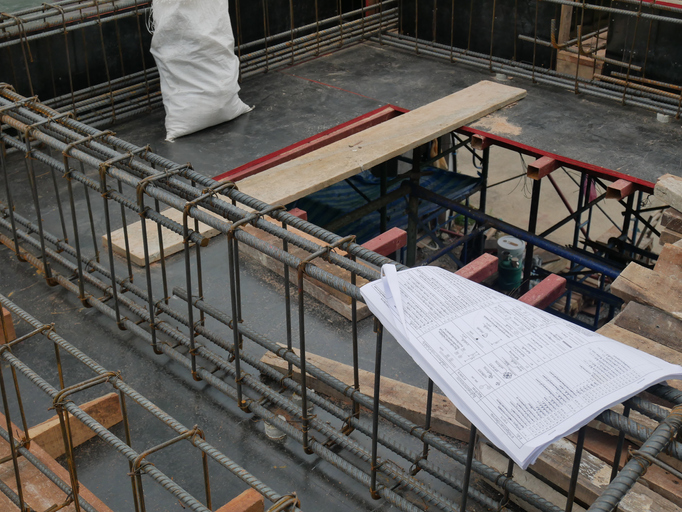
4. Earn as You Learn During Your Apprenticeship
One grievance that many people have when they decide to change their careers is the cost of training for a new job. When you have familial obligations and bills to pay, this can be a big obstacle. However, after training to become a construction millwright through welding college, you can choose to earn as you learn by applying for an apprenticeship. Looking for the right program to prepare you for learning on the job? In the Structural and Pressure Vessel Welder Diploma program, you’ll learn the fundamentals of welding and have the opportunity to put your knowledge to practice in the labs. With the right skills and experience, you’ll be ready to step into a paid job in no time.
Ready to enroll in welding college?
Contact NATS for more information!
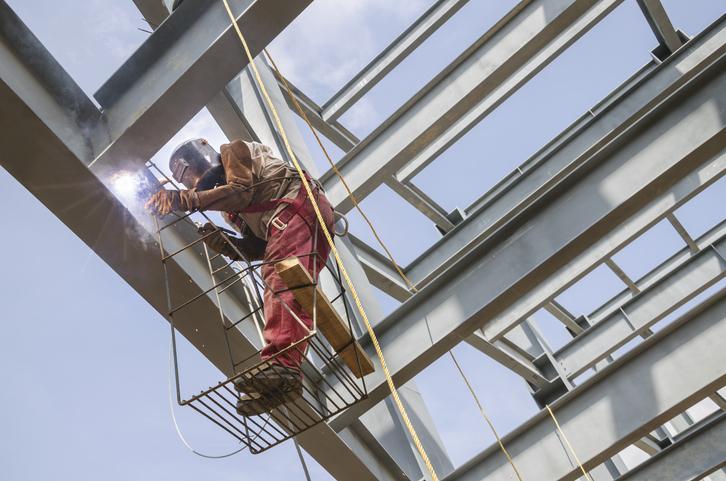
Are you looking for an interesting, dynamic career that’s in high demand? Ironwork is an excellent choice for anyone seeking hands-on work that allows them to enjoy variety and excitement. Ironworkers install structural and reinforced iron or steel to support buildings, bridges, and roads. As a trained ironworker, you’ll essentially help to build the structures that make a town or city function optimally–how rewarding!
In addition to being an interesting and stimulating occupation, a career in ironwork can provide you with the stability you’re looking for, since the demand for this skill will grow for years to come. Before you become an ironworker, there are several technical skills to learn. If you’re interested in pursuing this path, an apprenticeship is a great place to start. Wondering what it’s like? Keep reading to find out.
Every Day Starts With Safety
In class labs, any hands-on work you do will put you at risk of injury if you neglect safety practices. You should always start your day by making sure you’re wearing the right safety gear. In welding class, you’ll need a welding helmet, welding gloves, earplugs, heat-resistant clothing, and steel-toe boots.
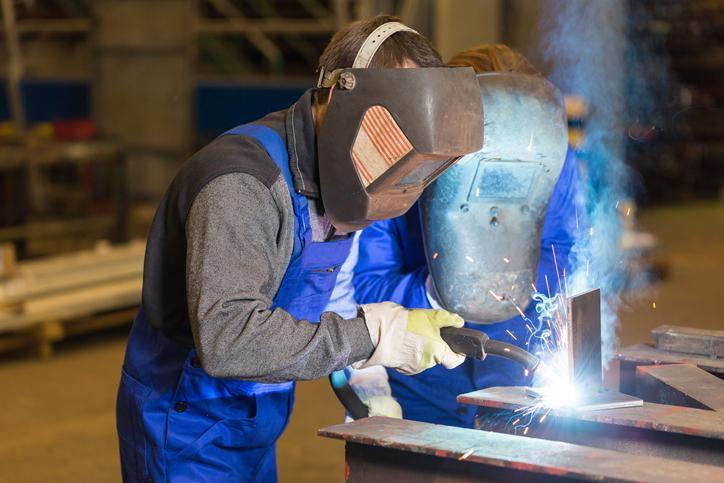
Depending on your job, you may be required to wear additional safety gear such as respirators and safety harnesses. Always be aware of your surroundings and make sure you’re up-to-date on all of the necessary safety training for your job site.
Learn the Skills You Need Using State-of-the-Industry Equipment
By taking welding classes at North American Trade Schools, you’ll learn both the theoretical and practical skills you need to succeed in your ironworking career. In addition, you’ll have access to modern state-of-the-industry equipment that will prepare you for work in the real world.
In your welding technician training, you’ll learn several fascinating skills. Gas Metal Arc Welding (GMAW), for example, is where an electric arc is the power source that causes metals to fuse. It’s considered a simpler process than Gas Tungsten Arc Welding (GTAW) which uses a non-consumable tungsten electrode to fuse metals and offers a cleaner finish.
Those are only a few of the competencies you’ll develop in class. Of course, to kick-start your ironworking career, you’ll want to get out there and see what it’s about for yourself. That’s where the next part of apprentice life comes in.
Put Your Skills From Welding Classes to Good Use on the Job
As an apprentice ironworker, you can expect to fulfill all sorts of duties which is great if variety is the spice of your life. You’ll probably start by doing basic but fundamental tasks like reading blueprints, welding, directing crane operators, and erecting steel structures. As you gain more experience on the job and have more opportunities to use your skills from welding class, your responsibilities will advance.
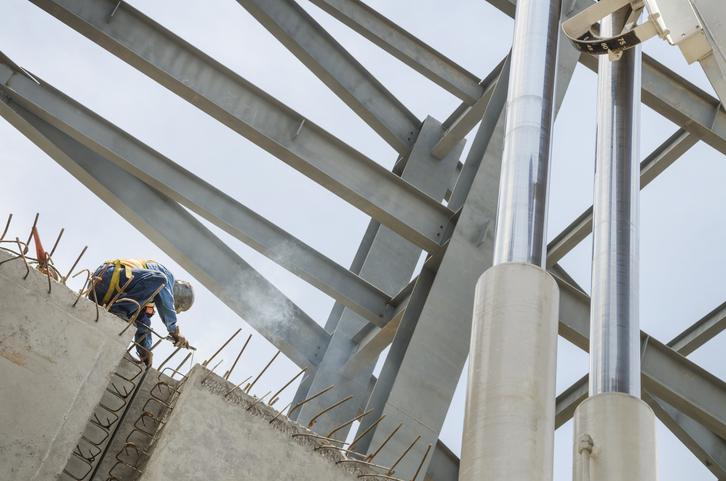
Working with a team of skilled ironworkers is such a crucial part of your journey as you will build important relationships and learn an array of skills–both practical and soft–where you’ll have support as you progress.
Interested in welding college?
Contact NATS to learn more!
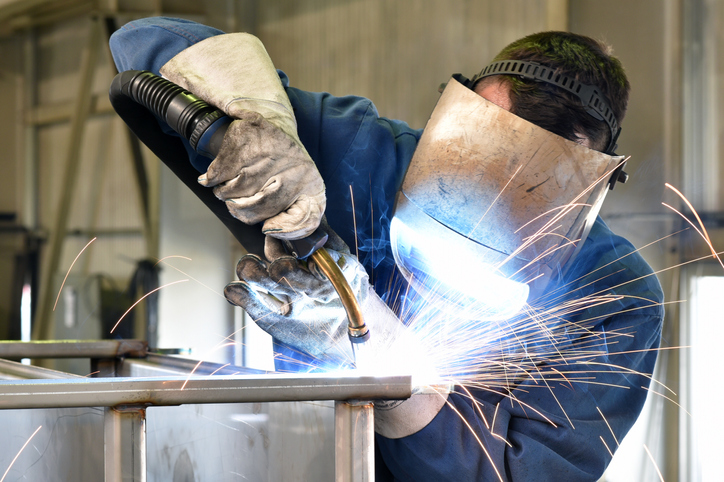
With skills that are required in various industries, Welders are professionals who are responsible for using different techniques to join metal parts, repair structural elements and more. Welders are needed in the construction and manufacturing industries, in addition to being employed in automotive garages, aviation, and underwater projects. Their principal duties might include choosing the right equipment for a specific weld, determining the proper weld technique to implement, accounting for safety hazards, adjusting and setting up metal components for a weld and more.
If you’re interested in welding training, building a few key skills will enhance your confidence while improving the accuracy and quality of your welds. Below, discover three key skills to develop during your training and throughout your apprenticeship to ensure a long and successful career as a welder.
Attention to Detail
While perfectionists aren’t a great fit for every career path, it’s safe to say that most would make a great welder. As you’re likely to realize during your welding technician training, it takes a lot of precision to become a welder. Welders benefit from being extremely attentive to detail–with the ability to notice every aspect of a welding project, spot potential mistakes before they happen, and align different components at just the right angles. They’ll need to perform precise cuts in accordance with specific dimensions, and produce a finished project with minimal flaws. For these reasons, employers in the welding industry often look for welders who are detail-oriented, as their work tends to be more accurate and more efficient in comparison to others.
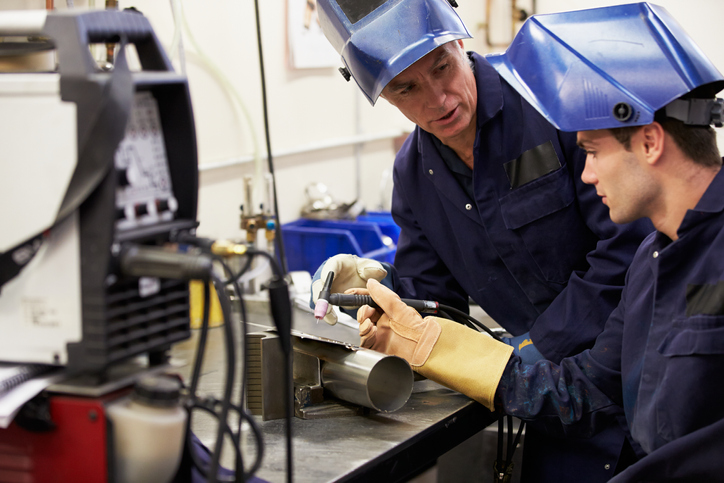
Develop Strong Mathematical Skills During Welder Training
Welders spend plenty of time on calculations, determining the correct amounts, sizes and measurements for various components of their projects. While you’ll probably be able to use a calculator as a welder, it’s no secret that if you possess the mathematical skills to perform most calculations off the top of your head, your workflow will become a lot more efficient. During welding classes, you’ll gain an understanding of the calculations you’ll need throughout your career, putting your mathematical skills to the test and enabling you to improve them. As a future welder, you’ll use mathematical skills to interpret model sketches and 2D/3D prints, trim materials accurately and much more.

Physical Strength Will be Important
As a welder, you won’t only be expected to have a knack for math; you’ll also need the physical skills to match the job. Welders use their whole bodies on the job, and are consistently lifting, bending, stooping and configuring materials. What’s more, being a welder requires standing for long hours. In addition to physical strength, welders also must be dextrous, as their hands serve as guides for any welding project they complete. If you have steady hands and a good grip, you’re likely to excel in this career path, as you’ll spend long periods of time handling various tools and joining different components with a weld. During an interview for your next job as a welder, an employer may test your hand-eye coordination, your ability to lift heavy weights and the steadiness of your hands.
Looking to pursue welder training?
Check out our program at the North American Trade Schools today!

For an individual who’s aspiring to have a successful and rewarding career, becoming a professional welder may be the right path for you. Welding is a fabrication process that uses heat and pressure to join metals or thermoplastics together. A welding career can take you to many different industries, from manufacturing, construction and mining to the aerospace, shipbuilding and military industries.
At North American Trade Schools, you’ll get hands-on and theoretical training in the welding practice. Through our pre-apprenticeship welding program, you’ll learn how to use modern equipment in welding processes for Gas Metal Arc Welding, Gas Tungsten Arc Welding and more. So, what’s it like having a welding career? Read on to find out!
After Your Welding Classes, Keep Safety Top of Mind
The first thing you need to know about welding is that as soon as your workday starts, you’ll be changing into your protective uniform and gear. Without the proper protective equipment and gear, you’re at risk of injury on the job site. After you complete your welding classes, you’ll have to make sure that you have fire-resistant clothing and gloves, as well as a protective helmet and N95 mask. You’ll then check your assigned projects and see what needs to be done for the day. At the same time, you’ll be collaborating with your co-workers and supervisors to ensure that everyone operates safely in the workspace and that the welding process runs smoothly.
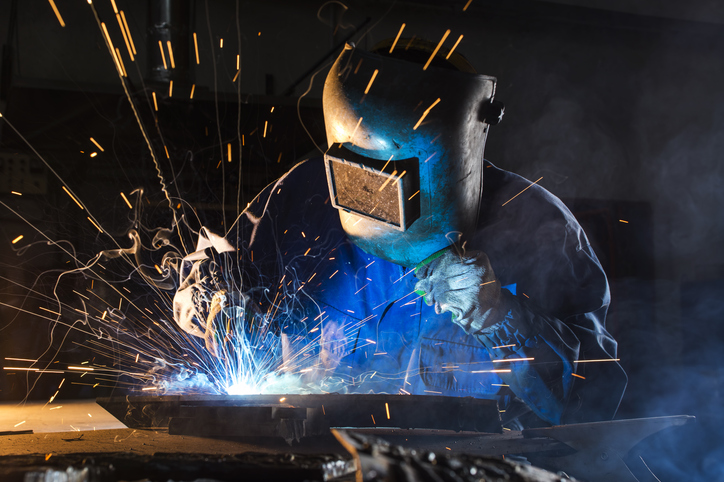
Expect Excitement Each Day of Your Welding Career
If you’re looking for dynamic work that keeps you busy, then you’re in luck! After you complete your welding technician training, you’ll find yourself working in a career that’s full of interesting opportunities, different settings, and varying working hours. You may get to work on a variety of tasks throughout the day, including joining metals together, cutting through materials, repairing holes for different structures, and more. So, a long day goes by more quickly than you think.
Your career won’t just lead to work in indoor spaces or scaffolding but will give you the chance to apply your skills to outside environments–sometimes in extreme or volatile conditions. You can be sure to get your adrenaline pumping as you work away on the job. So whether you’re working as a Welder, Welder Fitter, Boilermaker, Construction Millwright or Ironworker, your day will be full of excitement. As you shift from one welding project to the next, expect variety in your daily work and the potential to develop your career as an expert in different settings.
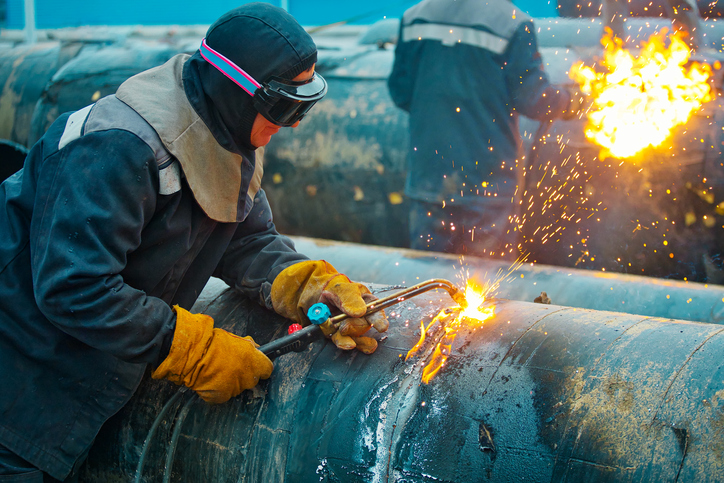
Your Day Ends the Same Way as it Started
Just like how you started, you’ll have to ensure the correct safety procedures are followed before you leave for the day. At the end of the day, it’s all about making sure that everything is ready for other welders and for the next day of operations. You’ll have to ensure that your welding job has been completed properly and that no issues have been left unresolved. Take the time to check that all the welding equipment and tools have been switched off and stored properly. It’ll be up to you to ensure that your work area is clean for the next day and with no hazardous materials left around. That way, you’ll be ready to start the next day on the job safely and efficiently.
Interested in a welding college?
Contact NATS for more information on our training programs!





